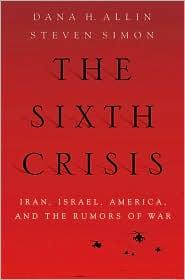 Over the past several years an ocean of ink has been spilt on the pages of many books, periodicals, and newspapers over the problem posed by Iran’s steady march toward nuclearization. The debate over Iranian intentions and regional ambitions, and how the United States and Israel should respond, has grown increasingly frantic, particularly as Iran crossed the enrichment threshold. Although many papers and books have focused solely on how the landscape of the Middle East will shift once Iran achieves its nuclear ambitions, most have lacked a clear explanation of how we have arrived at this point.
Over the past several years an ocean of ink has been spilt on the pages of many books, periodicals, and newspapers over the problem posed by Iran’s steady march toward nuclearization. The debate over Iranian intentions and regional ambitions, and how the United States and Israel should respond, has grown increasingly frantic, particularly as Iran crossed the enrichment threshold. Although many papers and books have focused solely on how the landscape of the Middle East will shift once Iran achieves its nuclear ambitions, most have lacked a clear explanation of how we have arrived at this point.
The Sixth Crisis by Dana Allin and Steven Simon successfully provides an historical understanding of how the tensions between Israel and the Arab world have shaped the geopolitical realities of the region and influenced a looming crisis over Iranian nuclearization that will have worldwide repercussions.
Since the end of World War II, the U.S. experience in the Middle East has been shaped by five successive and inter-related crises. Each has drawn the United States deeper into the Middle East, and each has compounded the difficulty of the next. Indeed, an inability to address the underlying problems of the region has served to further entangle America within the region while geopolitical realities lead it to become “fatefully associated with Israel’s occupation of Palestinian territories.” However, it is the impending sixth crisis, the culmination of decades-long tensions left unresolved and compounded over time, that threatens to plunge the region into chaos.
The Obama administration faces the unenviable task, with the help of the international community, of persuading Iran to change course from its current path, Should these initiatives fail, the United States may well decide to increase its military commitments to the region as part of a containment regime. At the same time, the United States has worked hard to prevent Israel from launching a unilateral attack to disable Iran’s nuclear program, an action Allin and Simon assert would result in a major regional conflagration.
In addition to pursuing such a delicately balanced diplomatic act, the Obama administration has highlighted the importance of the Israeli-Arab peace process to contributing to regional stability. By fostering the peace process the United States hopes to undercut the chief claim made by Iran regarding its nuclear program: that it is the bulwark against Israeli oppression. Furthermore, if Israel is able to normalize relations with its Arab neighbors, it will become much easier to contain a nuclear Iran and confront it, if necessary. Indeed, the Obama administration sees the peace process as necessary not only for dealing with the Iranian nuclear challenge but also to resolve the chronic instability that plagues the region.
Unlike its predecessors, the Obama administration has made progress in the peace process an early objective of its Middle East policy and has staked considerable political capital on its success. The efforts of earlier administrations effectively maintained the regional status quo. “Obama, in contrast, has calculated that the status quo is on an incline to catastrophe,” write Allin and Simon.
However, peace has proven elusive and in light of the recent deterioration of Israeli-Arab relations over the issue of settlement, this solution is a long way off. In the meantime, Iran will likely develop its nuclear capabilities and become what the authors call a “virtual” nuclear state, with the ability to produce and deploy a nuclear weapon on short notice.
Finally, the Iranian nuclear program threatens a core constituent of the Obama administration’s foreign policy goals: the reduction of global nuclear arms levels. The Iranian program also poses a grave threat to the sustainability of the Nuclear Non-Proliferation Treaty. Should Iran continue to flout international opinion, it may encourage other signatories to renege on their obligations. More significantly, it might lead to a cascade of regional nuclear proliferation as other states seek to hedge against Iranian belligerence or influence. According to the authors, instead of a world with only nine nuclear states, there could potentially be fifteen, or more, greatly increasing the chance of nuclear war (either intentional or accidental), a nuclear accident, or weapons falling into the hands of or being passed off to terrorists.
The authors do not fail to include the Iranian perspective. Indeed with thousands of U.S. troops on the ground in neighboring Afghanistan and Iraq, the U.S. Fifth Fleet harbored in Bahrain, and U.S. ally Israel with a nuclear arsenal as well, Iran has sought to develop its own nuclear deterrent to ensure the survival of the regime. Furthermore, the toppling of Saddam Hussein suggested to Iran that only a nuclear deterrent could protect against U.S. invasion. Such considerations do not excuse Tehran’s continued nuclear activities in the face of international opposition, but it does help explain the regime’s motivations.
However, as the authors argue, Iran cannot be the only focus of efforts on denuclearization. The United States must also pressure Israel to abandon its nuclear arsenal and support a Middle East nuclear-free zone. Indeed, such a stance would display the American commitment to peace and stability in the Middle East. Unfortunately, it is unlikely that this will occur. As outlined in The Sixth Crisis, the Middle East will continue to be a place of chronic instability. The problem posed by the Iranian nuclear program brings the region perilously close to erupting.
